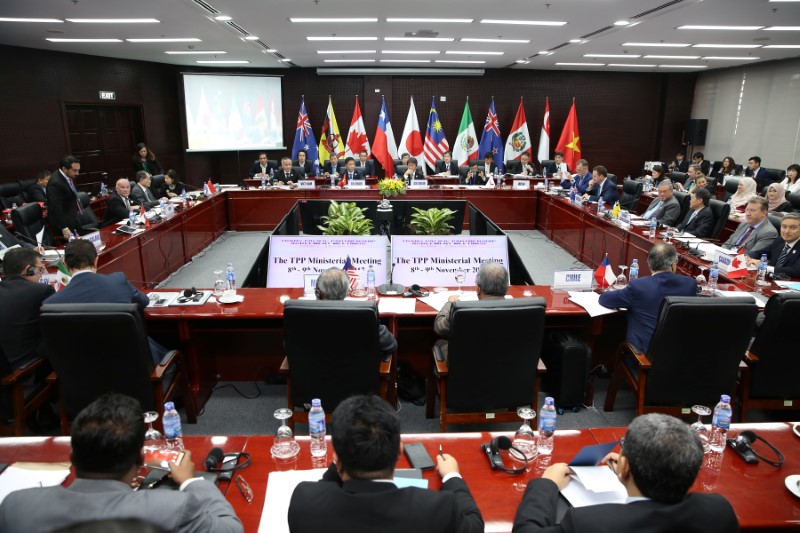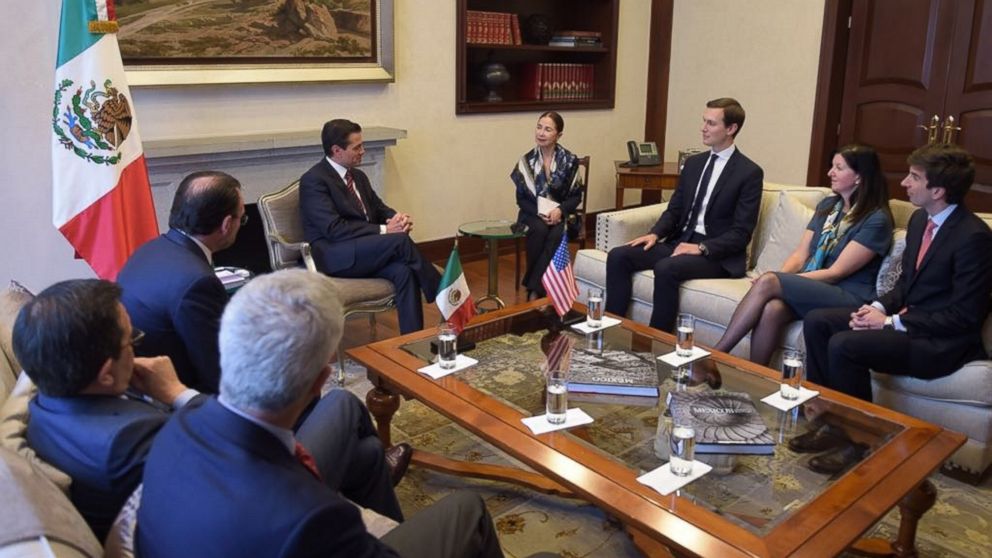
FILE PHOTO – Trade ministers and delegates from the remaining members of the Trans Pacific Partnership (TPP) attend the TPP Ministerial Meeting during the APEC 2017 in Da Nang, Vietnam November 9, 2017. REUTERS/Na Son Nguyen/Pool
March 8, 2018
By Dave Sherwood
SANTIAGO (Reuters) – Eleven countries are expected to sign a landmark Asia-Pacific trade agreement in Santiago on Thursday as an antidote to the increasingly protectionist bent of the United States, which pulled out of the pact last year.
The signing ceremony comes the day after Europe and the International Monetary Fund urged U.S. President Donald Trump to step back from the brink of a trade war focused on steel and aluminum imports.
The Comprehensive and Progressive Agreement for Trans-Pacific Partnership (CPTPP) will reduce tariffs in countries that together amount to more than 13 percent of the global economy – a total of $10 trillion. With the United States, it would have represented 40 percent.
Even without the United States, the deal will span a market of nearly 500 million people, making it one of the globe’s three largest trade agreements, according to Chilean and Canadian trade statistics.
The original 12-member agreement, known as the Trans-Pacific Partnership (TPP), was thrown into limbo early last year when Trump withdrew from the deal just three days after his inauguration in a bid to protect U.S. jobs.
The 11 remaining nations, led by Japan and Canada, finalized a revised trade pact in January. It will enter force when at least six member nations have completed domestic procedures to ratify the agreement.
The revised TPP agreement, to be signed at 3 p.m. (1800 GMT) Thursday, eliminates some requirements of the original TPP demanded by U.S. negotiators. Those include rules ramping up intellectual property protection of pharmaceuticals, which governments and activists of other member nations worried would raise the costs of medicine.
The final version of the agreement was released in New Zealand on Feb. 21. The member countries are Australia, Brunei, Canada, Chile, Japan, Malaysia, Mexico, New Zealand, Peru, Singapore and Vietnam.
In January, Trump, who also has threatened to dump the North American Free Trade Agreement, told the World Economic Forum in Switzerland that it was possible Washington might return to the TPP pact if it got a better deal. However, New Zealand’s trade minister said that was unlikely in the near term, while Japan has said altering the agreement now would be very difficult.
Trump promised on Thursday to show flexibility and cooperation towards “real friends” as he prepared to propose import tariffs on steel and aluminum.
(Reporting by Dave Sherwood; Editing by Leslie Adler and Bill Trott)

